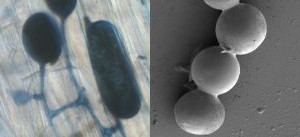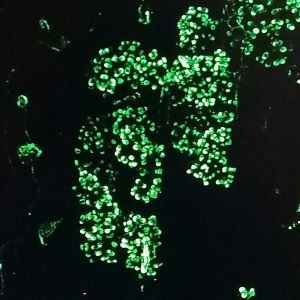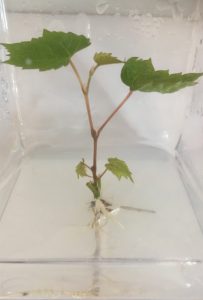Structure of symbiotic communities
The chairs
- Daniel Wipf is a Professor at the Université de Bourgogne in Dijon.
- Pierre-Emmanuel Courty is an INRAE research director at the AgroEcology unit in Dijon.
Description of the working group
In a context of agroecological transition from conventional management using massive amounts of synthetic inputs to sustainable management limiting the use of these inputs, it is necessary to understand and enhance the value of beneficial soil microorganisms, key players in guaranteeing the productivity and quality of agricultural products with a low ecological footprint. In plant-beneficial microorganism interactions, the improvement of services (e.g. plant health, nutrition, qualitative and quantitative production) has mainly been studied at plant level. We are now shifting the paradigm to an integrative scale, which places the beneficial soil microbiota at the heart of plant holobiont functioning. Beneficial interactions represent only part of the interactions that coexist within a holobiont between the plant and its associated microorganisms, but also between microorganisms (e.g. competition, facilitation). Just as the first green revolution laid down the guidelines for fertilization, research must now define the broad outlines of symbiotic efficiency. Academic research into plant-symbiont interactions has largely been carried out at species level. However, genetic variability within each holobiont species (plants and microorganisms) can strongly affect symbiotic efficiency on several scales: survival of microorganisms in the soil, ability of microorganisms to colonize their hosts, diversity of functions associated with the microorganism reservoir. The establishment (e.g.: cellular reprogramming) and functioning (e.g.: transfer of resources to symbionts) of these beneficial mutualistic interactions involve fine-tuned regulation in the selection of partners, which conditions the efficiency of symbioses. Efficacy is complex to measure because it (i) depends on the scale of the study (e.g. cell, tissue, individual, population, ecosystem), (ii) may evolve over the course of the plant’s development cycle, and (iii) may depend on multiple factors (e.g. history of cultivation practices, pedoclimate, technical itineraries). Thus, several scientific fronts are open:
- dissecting beneficial plant-microorganism interactions at different scales within a holobiont (e.g. culturomics, metabarcoding, metagenomics),
- define markers of this efficiency to predict emerging properties of symbiotic communities,
- define levers for maximizing or optimizing the efficiency of these plant-microorganism interactions (e.g. technical itineraries, inoculation),
- produce operational microbiological indicators linked to the industry.

It is in this context that this working group focuses on arbuscular mycorrhizal fungi (AMF), taking into account possible interactions with other symbiotic microorganisms, free or not (e.g. PGPR, Rhizobium), promoters or facilitators of ecosystem services in soils (competition, antagonism, synergy) within a holobiont. The limits of the holobiont will be taken into account in plant-plant interactions, notably through the study of Common Mycelial Networks (CMNs) formed by CMAs between the roots of the majority of cultivated plants, whether perennial or annual. The working group is focusing on 6 areas in particular:

- How can we evaluate the symbiotic efficiency of CMAs at interspecific level, in the laboratory and in the field?
- What are the best strategies for co-selecting complex symbiotic inoculum (rhizobium, PGPR and CMA) in different plant varieties? How can these strategies take into account the competitiveness of plant-microorganism associations in forming symbiotic structures, their efficiencies and possible interactions between symbioses (including between symbiotic plants)?
- What role do soil microbiota play as indirect facilitators of CMA symbiosis? How can we take them into account?
- What transfers through mycelial networks? How can they be characterized and quantified? What mechanisms, what genetic determinants? Do they define a target for improving synergies between plants, between symbioses, at canopy level, in the case of associated crops (e.g. legumes-cereals)?
- How can industry professionals take CMAs and associated symbiotic communities into account when selecting plant genotypes/varieties/ideotypes?
- Is it possible to define synthetic communities of CMAs or symbiotic microorganisms?


